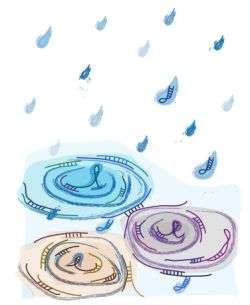New technique paves the way for drug targeting to fight microbial resistance

Research investigators in Singapore have developed a new high throughput method that identifies how ribonucleic acid (RNA) molecules come together in an unbiased and large-scale manner inside cells. Named SPLASH, or Sequencing of Psoralen Linked And Selected Hybrids, this newly-developed technique was used to describe the RNA network in human and yeast cells, its dynamics, and how the structural organisation impacts translation and decay processes in the cell.
The development was jointly led by Drs Wan Yue and Niranjan Nagarajan from A*STAR's Genome Institute of Singapore (GIS), and was published online on 12 May 2016 in Molecular Cell.
RNAs are key molecules that play important roles in regulating gene expression in a cell. While the scientific community has extensively studied how mini cellular machines such as proteins and chromatin fold and interact with each other over the past decades, lesser is known about how RNA come together to interact with itself or with other RNA molecules. This limitation prompted the team to come up with SPLASH to advance understanding of RNA interactions.
Dr Wan, co-lead author of the study and Junior Principal Investigator of Stem Cell & Regenerative Biology at the GIS said, "The cell is a complex machine; we need to understand the configuration of all its components to be able to engineer and/or repair it. RNA shapes and RNA interaction networks are key to cellular function. Depending on cellular needs, these dynamic interaction networks can be remodelled. Most importantly, targeting these networks could be a means to inhibit infectious organisms." Dr Wan received the prestigious Branco Weiss Fellowship in 2014 and the Young Scientist Award in 2015 for her work on antimicrobial resistance.
The method will allow the team to study the transcriptomes of infectious organisms - including pathogenic bacteria, dengue and Zika viruses - to understand the way RNA shapes and networks in these genomes enable the infection of human cells by pathogens. It is hoped that these efforts in understanding microbial pathogenicity will contribute to new anti-microbials, anti-virals or vaccines against these pathogens.
"It is exciting to have a first comprehensive view of the RNA interactome and to capture its dynamics. We now have the tools to understand how RNA structural organization impacts disease and pathogen biology, with the eventual goal being to leverage this understanding for new drugs and antimicrobials," added Dr Nagarajan, the paper's co-lead author and Principal Investigator of Computational & Systems Biology at the GIS.
GIS Executive Director Prof Ng Huck Hui said, "Understanding RNA interaction networks and gene regulation is an area of intense interest for the scientific community. Prior to the development of SPLASH, few tools allowed researchers to delve deeper into this field of research. This method now opens the field to understand the dynamics of RNA interaction networks in diverse organisms. I am hopeful that it will help the community better understand how RNAs function in vivo and as a result, reap the benefits from their newly-gained insights."
More information: Jong Ghut Ashley Aw, et al. In Vivo Mapping of Eukaryotic RNA Interactomes Reveals Principles of Higher-Order Organization and Regulation, Molecular Cell (2016). DOI: 10.1016/j.molcel.2016.04.028
Journal information: Molecular Cell

















